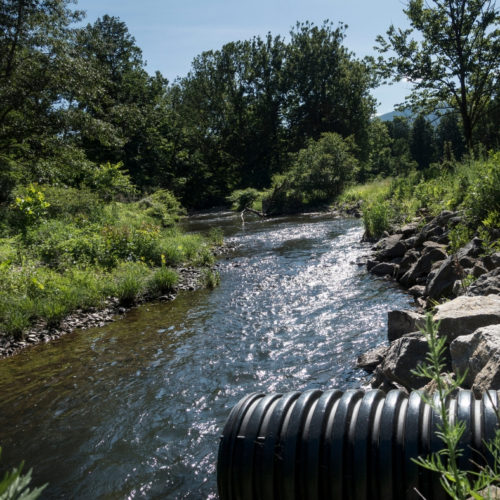
Water Resource Engineer News: Water Retention Basin Benefits More Than Flood Control
Stormwater detention basins are located throughout the United States. The main purpose of a detention basin is to control the flow of rainwater and runoff by diverting it from areas where water could cause property damage or loss of life and redirect it to areas to be used for water resource retention. Research is showing a water resource engineer can use these types of structures for multiple purposes.
Penn State assistant professor Laren E. McPhillips shared her research showing the potential for stormwater detention basins to control nitrogen runoff. The movement of nitrogen is important to maintaining the health of river and lake ecosystems. The real-world applications of this research will have a positive effect on floodplain management strategies.
Why Focus on Nitrogen?
While nitrogen is an important part of Earth’s atmosphere, it can be harmful in other forms. When stormwater runs through a floodplain management system, it leaves behind nitrogen. According to a summary of Ms. McPhillips in Science Daily, “nitrates [can] cause overgrowth of algae in bodies of water. This eutrophication removes oxygen from the water and creates underwater deserts where fish and other water creatures cannot live.” These environments are an extreme detriment to creating environmentally friendly systems.
Using Existing Basins to Reduce Nitrogen
In addition to controlling flood waters, Ms. McPhillips proposes stormwater retention basins can be used to remove nitrogen through several techniques. The article states nitrogen, “can pass into the groundwater and then to rivers, streams and lakes; it can be taken up by vegetation; or it can be converted to other compounds by microbes living in the basins.” The end goal is to convert all nitrates into gaseous nitrogen which is no longer harmful.
The best way to use these basins is to keep them full of water and underground. The longer a basin holds water, the more nitrates that can be converted. There is also a concern about this process releasing methane into the atmosphere. By keeping the basins underwater methane is trapped in the soil where it is degraded by oxygen.
Discovering new ways to benefit from existing infrastructure helps develop multifunctional systems that result in increased sustainability.
OEI Water Resource Engineer Multipurpose Projects
In addition to exceeding the goals outlined in an original floodplain management plan, OEI’s water resource engineer team uses its extensive experience and expertise to envision alternate purposes for each site. An example of this is using floodplain management to control flood waters from damaging a community while also establishing a nature preserve and recreational area.
We continue to monitor and participate in advances in the floodplain management field. Through continuous improvement and innovation, we bring together multiple industry disciplines that result in sustainable and multi-functional solutions for private to federal sector clients.
Contact us today to begin the process of updating your community’s water resource systems. By working together, we can create systems that will benefit our communities for generations.
